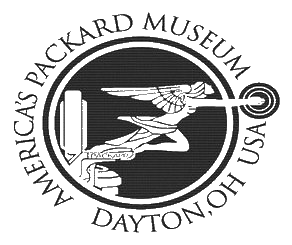T-Shirts in two color options from America's Packard Museum
Show your love of Packards with T-shirts from the museum. Full color image of the logo for America’s Packard Museum is displayed proudly on the front.
Color: Maroon or Carolina Blue
Hanes Authentic brand
100% ring spun cotton
Soft washed garment dyed fabric
Sizes available in Small-XXXL
Show your love of Packards with T-shirts from the museum. Full color image of the logo for America’s Packard Museum is displayed proudly on the front.
Color: Maroon or Carolina Blue
Hanes Authentic brand
100% ring spun cotton
Soft washed garment dyed fabric
Sizes available in Small-XXXL
Show your love of Packards with T-shirts from the museum. Full color image of the logo for America’s Packard Museum is displayed proudly on the front.
Color: Maroon or Carolina Blue
Hanes Authentic brand
100% ring spun cotton
Soft washed garment dyed fabric
Sizes available in Small-XXXL
About T-Shirts
Before there were T-shirts, there were union suits. These were one-piece undergarments designed in the mid 1800s as an alternative to restrictive undergarments women had to wear in Victorian times. The union suits featured buttons and flaps and were ultimately never popular among the elites, but in the late 1800s laborers adopted the outfit. Often made of wool flannel or heavy cotton, variants of union suits were popular in winter, and lighter cotton variants were often worn in summer--and believe it or not, wearing union suits on their own was the source of controversy. The 1898 Spanish-American war is often credited for starting the T-shirt revolution. Given most of the action took place in warm and humid climates of the Caribbean and South Pacific, it’s not hard to imagine sailors on both sides would have appreciated cooler and more comfortable undergarments. Unlike modern T-shirts, undergarments of the time were custom-made to fit an individual person’s body. They were designed to fit tight against the skin so that you could wear clothing overtop, rather than to letting your body regulate its own temperature by letting air flow through the fabrics.
Shortly after the Spanish-American war, the Cooper Underwear Company famously ran an ad featuring “the bachelor shirt” in 1904. As you can imagine, buttons on undergarments are pretty impractical and prone to tears. That might explain why Cooper Underwear Company advertised the T-shirt as a no-fuss undershirt that you could pull over your head. No need for needles or thread—the T-shirt was simple, easy, and comfortable. The US military began issuing what we would today call a T-shirt as early as 1913. Back then, they were called “lightweight short-sleeve white cotton undervests.” Soldiers working in warm climates would often shed their outer layers, wearing nothing but plain white T-shirts and embracing the look in civilian life. The T-shirt quickly became popular among all types of working men.
The T-shirt was given many names, like a “crew-neck shirt,” a “bachelor undershirt,” or a “cotton pullover.” But when F. Scott Fitzgerald first called it a T-shirt in his book This Side of Paradise, the name caught on. It made sense--the shape of the shirt looked like a “T.”
T-shirts remained as undershirts until the 1950s. But when Marlon Brando wore a white T-shirt in A Streetcar Named Desire, markets exploded with a demand for his look. The style was officially in for good. It’s hard to say if it was Brando’s stardom or character that popularized the T-shirt, but either way, Hollywood was on to something. A few years later, A Rebel Without a Cause would rock the world with the legendary James Dean, who would end up taking the T-shirt further as a fashion statement by rocking it on and off the big screen. CREDIT: The Classic T-Shirt Company.


